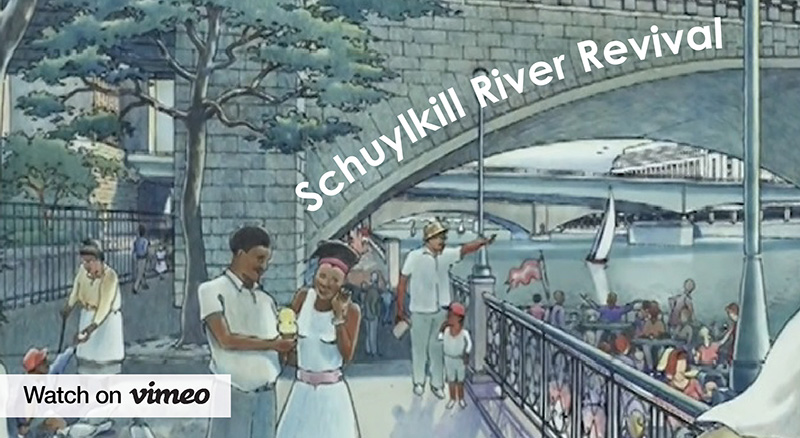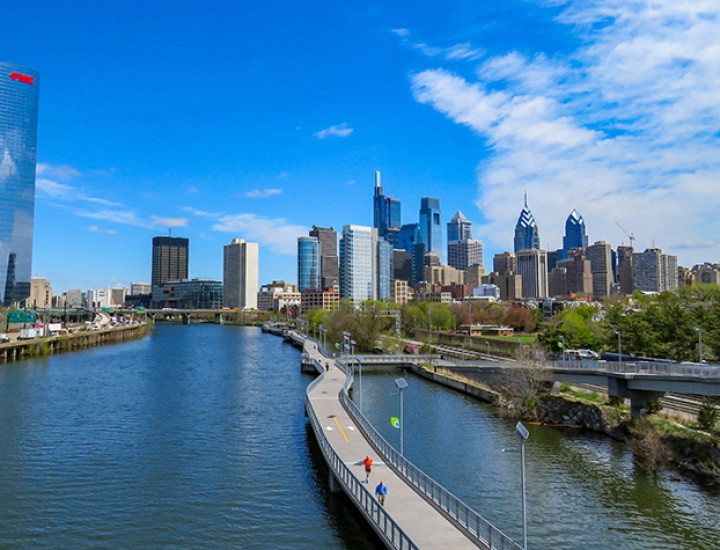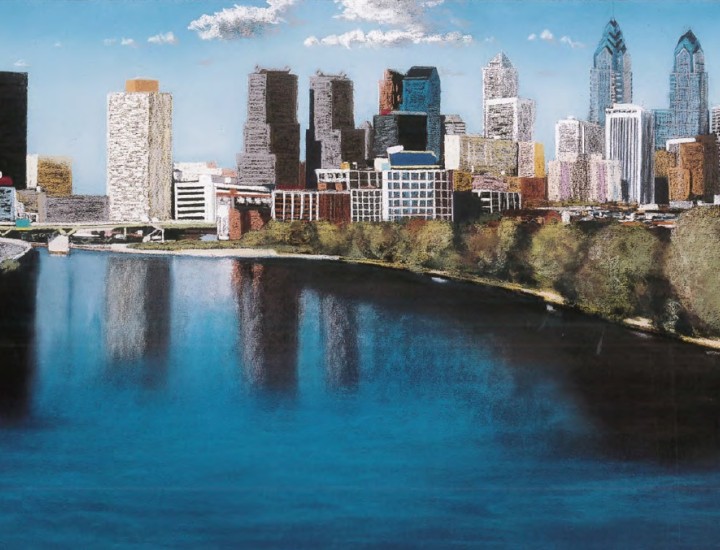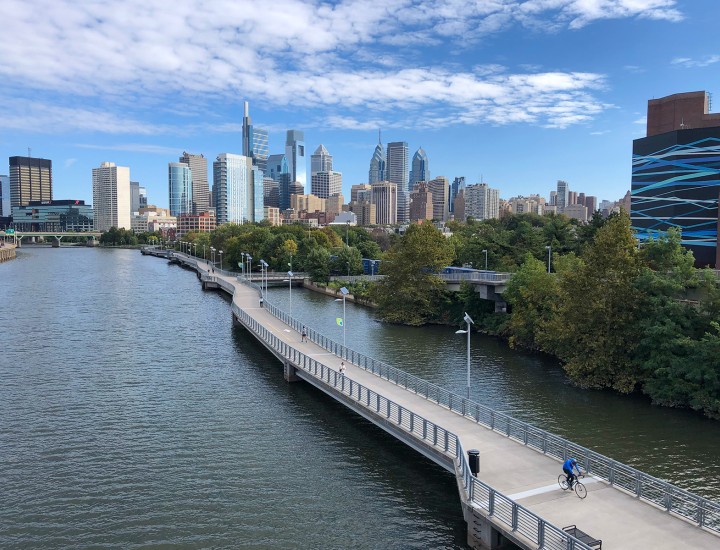History
A Brief History of the Lower Schuylkill
Very Early History
Before the founding of Philadelphia, the Schuylkill (then known as Manayunk, meaning “where we go to drink” or Ganoshowanna, meaning “falling water") was an important part of the landscape for the Lenape tribe. (Learn more about the Lenape here.) William Penn originally intended for his “greene country towne” to spread evenly between the Delaware and Schuylkill Rivers, situating the city at the narrowest point between the two rivers. However, residents had other ideas, developing bustling neighborhoods along the Delaware River and leaving the Schuylkill River largely as a country retreat with bucolic estates, institutional uses, and larger farm tracts through the late 1700s.
Industrial Revolution
The 1800s brought the industrialization of the Schuylkill River, with heavy use of the tidal portion of the river for ships and barges at the beginning of the century, transitioning to rail yards, slaughterhouses, trash yards, and related uses by the end of the century. Neighborhoods along the river consisted primarily of working class families who benefitted from living near factories and other centers of labor and could not afford to live farther away from the increasingly polluted riverfront. The 1800s also saw the institution of the Fairmount Water Works, Fairmount Dam, and Fairmount Park, all of which worked together to protect Philadelphia’s drinking water from industrial and agricultural pollution upriver from Philadelphia’s city center.
Movements to Reclaim the River
By the early 1900s, the tidal Schuylkill was choked with so much trash and effluent that the river was unable to carry it away from the city. In 1924, John Frederick Lewis and the City Parks Association published a tract calling for the reclamation of the lower Schuylkill River. By the middle of the 20th Century, most industry had abandoned the tidal Schuylkill in Center City and West Philadelphia. What remained consisted of transportation infrastructure, including rail lines and a newly constructed expressway. In the 1980s, residents from the Fitler Square neighborhood successfully advocated for the creation of Schuylkill River Park at 25th and Spruce Streets. Encouraged by its success, John Collins, a landscape architect, proposed a linear park along the largely abandoned riverfront.
The Growth of Schuylkill Banks
Schuylkill River Development Council
The Schuylkill River Development Council was formed in 1992 to advocate and raise funds for the riverfront park. This early iteration of SRDC was a very active neighborhood group. Thanks in large part to its advocacy, the City of Philadelphia Department of Streets cleared, bulkheaded, and added a paved trail along the riverfront between Locust Street and MLK Jr. Drive.
Schuylkill River Development Corporation
A decade after its founding, SRDC voted to restructure. The new nonprofit had a Board of Directors comprised of stakeholders along the river, including universities, utilities, city government agencies, and businesses. It also had a professional staff that was hired to fundraise and advocate for trail development, oversee capital projects, and implement maintenance and programming. Under the leadership of the new Board, SRDC worked with the City to landscape the Center City portion of the trail, create a vision for a connected greenway along the entire tidal Schuylkill, and take steps towards implementing that vision.
Between 1992 and 2024, more than $110M has been invested by SRDC, the City, various state and federal programs, and partners along the tidal Schuylkill, resulting in dramatic improvements to the built environment and playing a significant role in the revitalization of neighborhoods along the completed portions of the trail and greenway. The Schuylkill River, Schuylkill Banks, and larger Schuylkill River Trail have received numerous awards and distinctions, such as PA River of the Year, Trail of the Year, and the USA Today’s Best Urban Trail in America.
Watch this short presentation about the revival of the Schuylkill River narrated by John Randolph.



